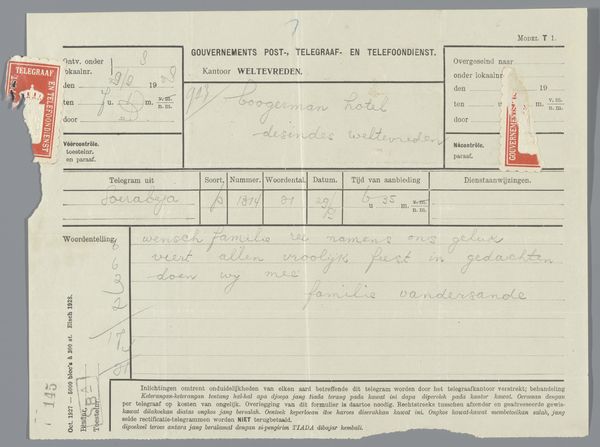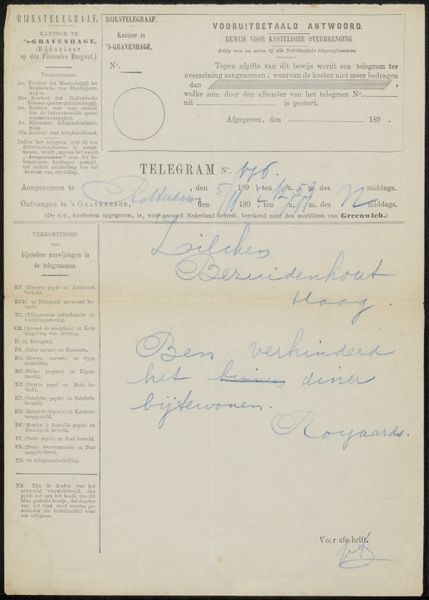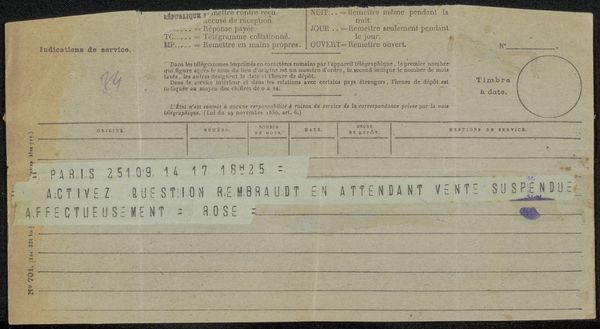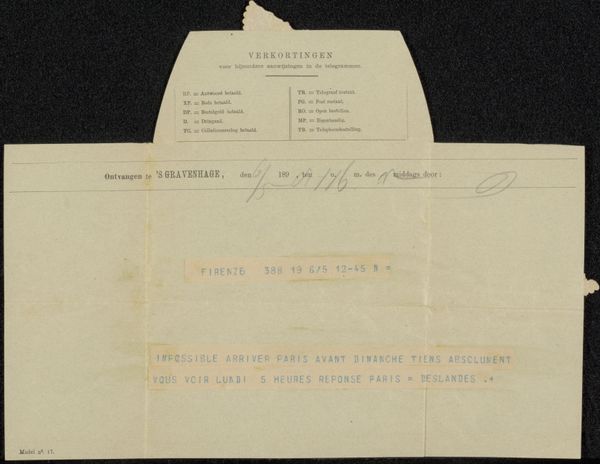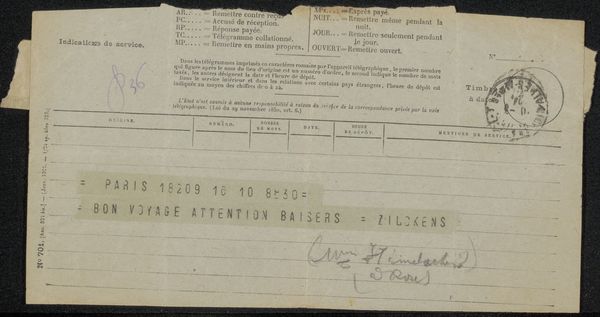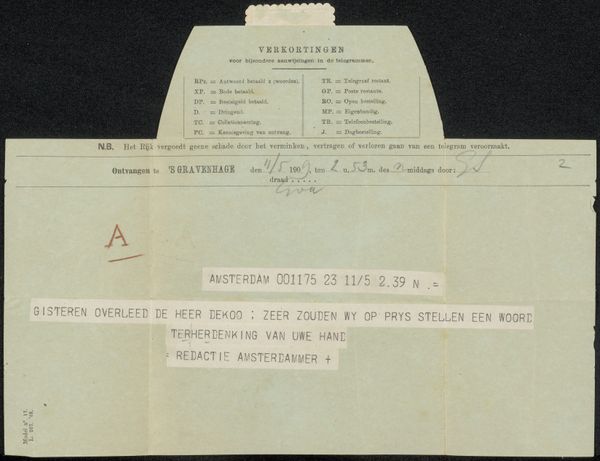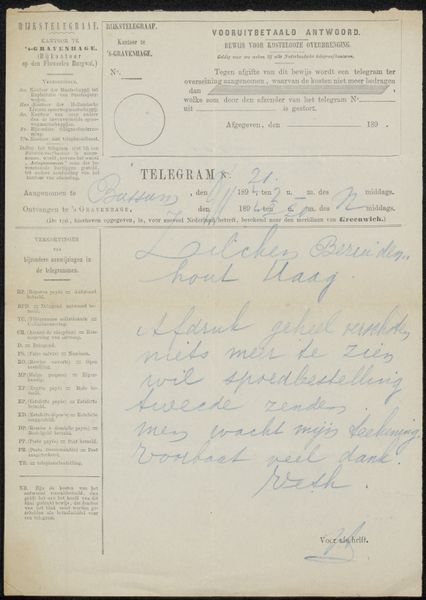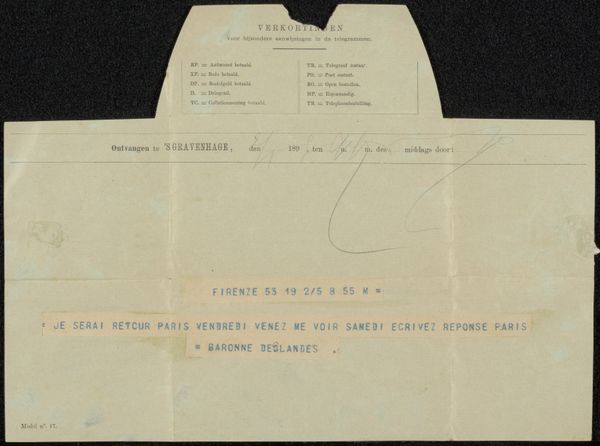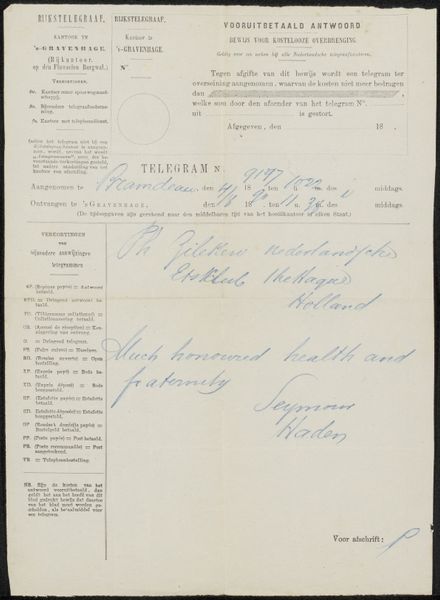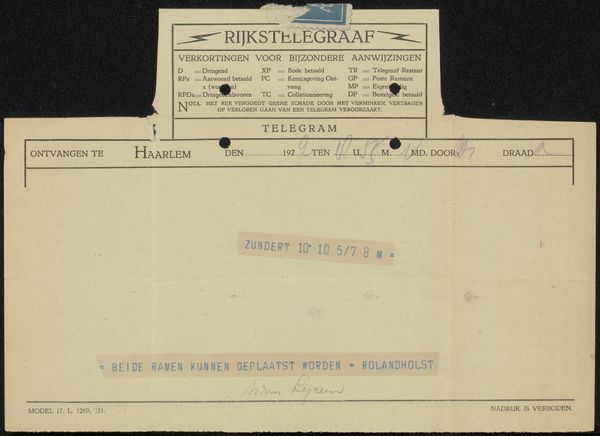
drawing, graphic-art, paper, ink
#
drawing
#
graphic-art
#
paper
#
ink
#
calligraphy
Copyright: Rijks Museum: Open Domain
Curator: Before us is a piece titled "Telegram aan Philip Zilcken," created sometime between 1922 and 1929, seemingly a work of graphic art employing ink on paper. My first reaction is that of organized chaos; there’s a system here, the form of the telegram itself, yet overlaid with layers of almost frantic annotations. Editor: Yes, the visual layering immediately strikes me. The underlying telegram form, with its pre-printed sections, serves as a structured grid against which we see scrawled handwritten notes. This immediately raises questions about its context – who sent it, why, and what story does this document silently hold? Curator: Structurally, the lines of text, both printed and handwritten, create a series of contrasting textures. The neatness of the typed message plays against the immediacy and possible urgency of the penned additions, hinting at layers of communication and decision-making. The visible erasures and edits emphasize the ephemeral nature of such exchanges. Editor: It becomes an archive of a specific moment in communication history. Telegraphs played a key role in connecting individuals across geographical distances rapidly. Examining this document historically situates us within that era of accelerating information exchange and its impact on cultural and economic activities. The "DORBON OFFRE SIX MILLE TOUT = ROSE +" at the bottom—was this about an art transaction, perhaps, given Zilcken's role in the art world? Curator: Indeed, consider the calligraphy, or rather, the varied inscriptions—from formal printed characters to the cursive script—each denotes a distinct level of authorial intention. What impact did the sender aim to achieve with this stylistic heterogeneity? Are these simply practical annotations, or are there subliminal considerations to decode in each stroke? Editor: Analyzing Zilcken's professional life might provide insights. How did figures in the art world leverage the speed of telegrams for market activities or for cultivating connections? Who was Rose? Each inscription is also a trace, connecting specific human actors and social frameworks tied to art distribution and collection practices of the time. Curator: Ultimately, this “telegram” becomes more than the sum of its communicative function; the visual attributes themselves articulate information exceeding a straightforward textual analysis. Editor: Precisely, making it a fascinating glimpse into how urgent communications reveal layers of cultural and individual exchanges from that period. Thank you for pointing out the intricacies in what at first glance looked like an ordinary message.
Comments
No comments
Be the first to comment and join the conversation on the ultimate creative platform.

